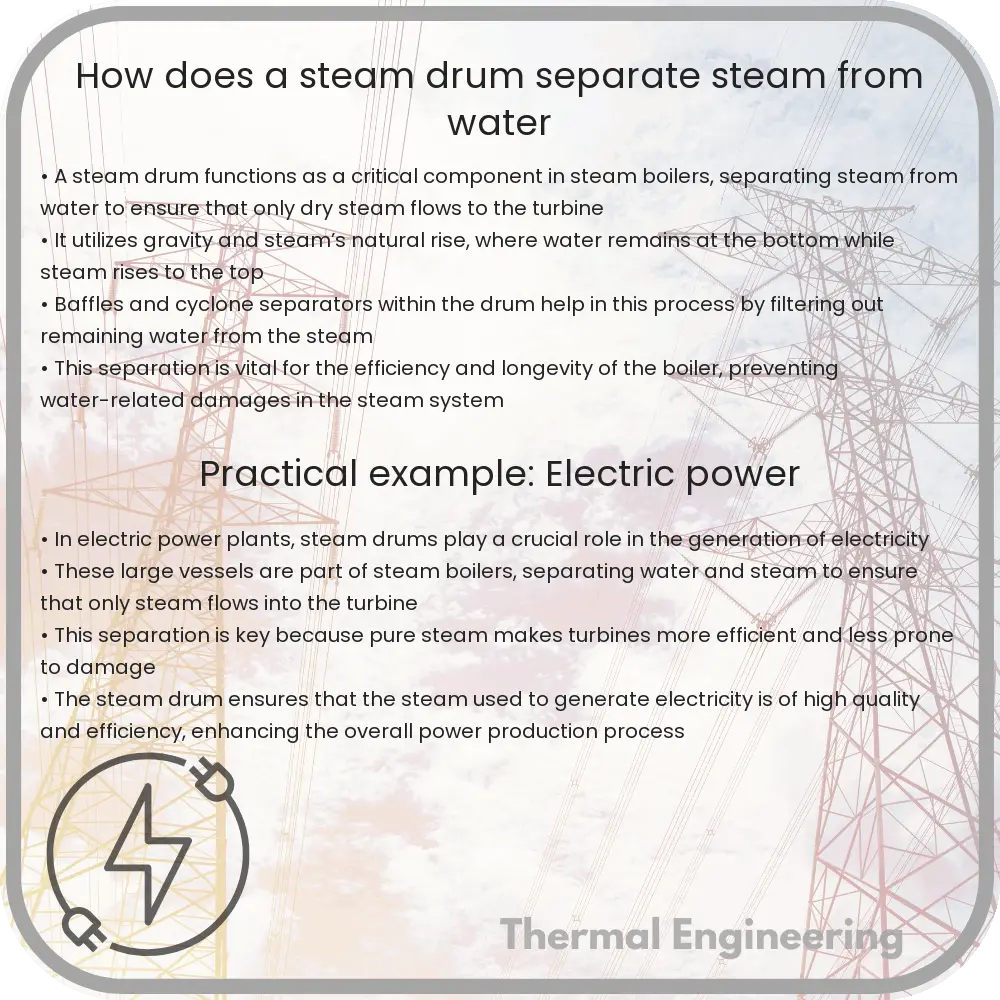Dive into the essentials of steam drums in boilers, exploring their purpose in steam-water separation and their impact on efficiency and safety.

Understanding the Role of a Steam Drum in Steam Separation
Steam drums are a critical component of steam boilers, which are widely used in power plants, factories, and ships. Their primary function is to separate steam from water. This process is essential not only to deliver steam at a desired pressure and temperature but also to ensure the efficiency and safety of the boiler system.
What is a Steam Drum?
A steam drum is a standard piece of equipment in water-tube boilers. It is a reservoir of water and steam at the top of the boiler. The steam drum stores the steam generated in the water tubes and acts as a phase-separator for the steam/water mixture.
How the Separation Process Works
The process of separating steam from water in a steam drum involves several physical phenomena and is facilitated by different internal components:
- Saturation of Steam: When boiling water generates steam, it rises due to its lower density compared to water.
- Momentum and Gravity Separation: As the mixture of water and steam enters the steam drum, the larger water droplets tend to fall to the bottom of the drum due to gravity, while steam rises to the top.
- Baffles and Screens: These are installed inside the drum to help separate water droplets from the steam. Baffles change the direction of steam flow and scrub out water droplets. Screens capture and collect droplets.
- Centrifugal Separators: In more advanced setups, centrifugal forces are utilized to enhance separation, spinning the mixture and intensively separating the denser water from steam.
Once separation is achieved, steam is drawn from the top of the drum for use in various processes while water remains in the drum to be cycled back through the boiler.
Importance of Efficient Steam-Water Separation
The efficiency of steam-water separation in steam drums is crucial for a number of reasons:
- Purity of Steam: Higher purity in steam helps prevent corrosion and scaling in steam turbines and other equipment.
- Energy Efficiency: Proper separation ensures that only steam (and not water) enters the steam line, which enhances thermal efficiency and reduces fuel costs.
- Operational Safety: Avoiding water carryover into the steam line minimizes the risk of damage caused by water hammer and other hydraulic impacts.
Conclusion
The separation of steam from water within a steam drum is fundamental to the operation of steam generation systems. By utilizing natural physical properties and engineered controls and components inside the drum, efficient and effective separation can be achieved to maintain system efficiency, prolong equipment lifespan, and ensure operational safety. Understanding these mechanisms helps professionals in the engineering field to optimize boiler operations and maintenance.
This insight into steam drum functions serves as a fundamental explanation beneficial for students, engineers, and anyone interested in the operational dynamics of steam boilers.